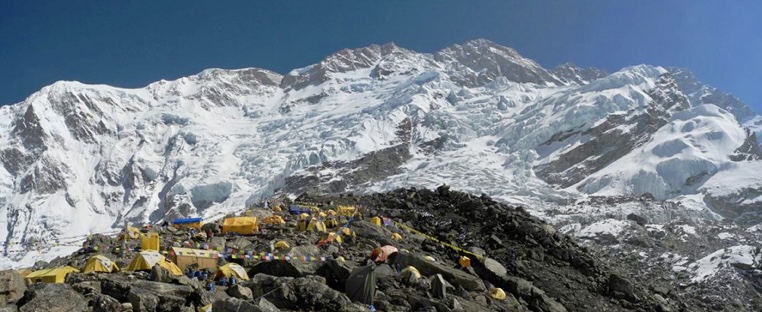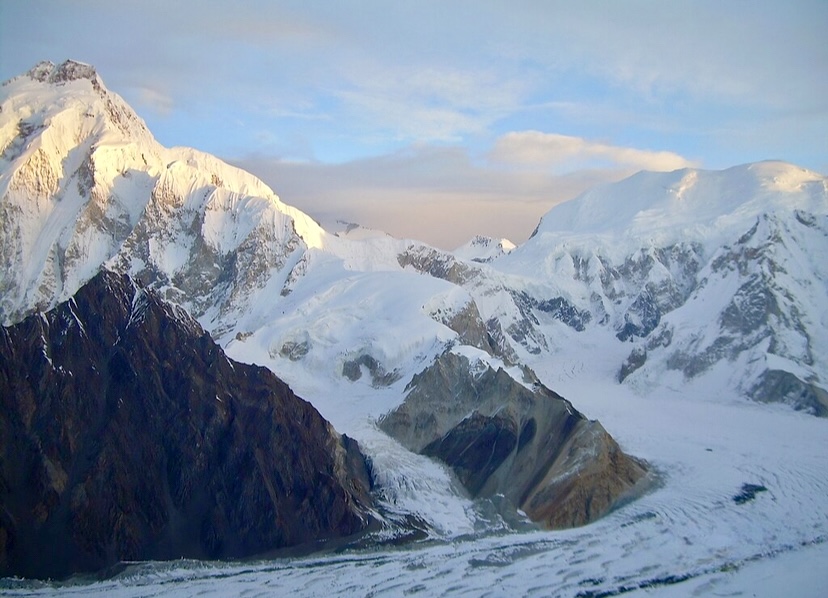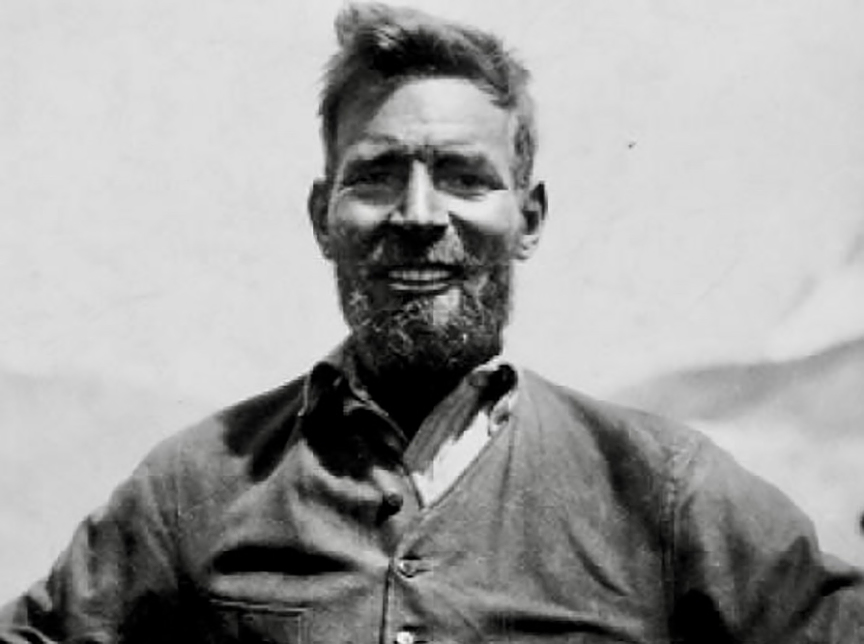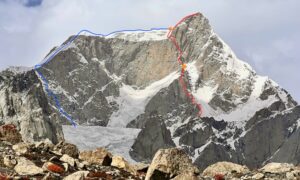On this day in 1886, the German-Swiss mountaineer, geologist, and geographer Gunter Oskar Dyhrenfurth was born.
Dyhrenfurth explored the Himalaya and the Karakoram and published several well-regarded mountaineering books and articles. He made several first ascents and opened many new routes. He was also the father of Norman Dyhrenfurth, leader of the 1963 American Mount Everest Expedition.
Born in Breslau, Silesia (Germany at the time, now part of Poland), G. O. Dyhrenfurth studied geology and paleontology. He started climbing at a young age. By the time he was 21, he had opened several new routes in the Tatras Mountains.
Between 1907 and 1914, G.O. Dyhrenfurth worked on a geological map of Switzerland. In 1911, he married Harriet Heymann (Hettie), also from Breslau. The couple had three children, including Norman, who often climbed with his father in the Alps.

Hettie Dyhrenfurth. Photo: Gunter Oskar Dyhrenfurth
Between 1919 and 1921, Dyhrenfurth worked at Breslau University but resigned in 1933 after the Nazis took power. (His heritage was Jewish.) Half the family moved to the United States, while Dyhrenfurth himself — who had since become a Swiss citizen — settled in Switzerland. In 1948, he divorced Hettie and later married another woman.
Although most students of mountaineering know his son Norman better, G. O. Dyhrenfurth’s expeditions to Asia were outstanding.
Kangchenjunga, 1930
In the spring of 1930, G. O. Dyhrenfurth led an expedition to Kangchenjunga. The team included 12 other mountaineers from the UK, Germany, Austria, and Switzerland, plus three Sherpas. His wife, Hettie, also joined him.
At that time, no 8,000m peak had been summited, but they were attempting to climb the third-highest mountain in the world, at 8,586m, by the North Face/North Ridge. They reached a high point of 6,380m before one of the sherpas, Chettan Sherpa, died in an avalanche. He was buried at Camp 2.

Base Camp at the foot of Kangchenjunga. Photo: Nives Meroi
Jongsang Ri
Although they didn’t summit Kangchenjunga, the 1930 expedition made three first ascents in the Himalaya. On June 3, Hermann Hoerlin of Germany and Erwin Schneider of Austria made the first ascent of 7,462m Jongsang Ri. It lies 20km north of Kangchenjunga, on the border of Nepal, India, and China.
On June 8, Dyhrenfurth, Marcel Louis Kurz, Frank Smythe, Ulrich Wieland, Lewa Sherpa, and Tsering Norbu Sherpa also summited Jongsang Ri via the north ridge.
Until the first ascent of 7,756m Kamet in India a year later, Jongsang Ri stood as the highest successful climb in the world.
Even today, Jongsang Ri has only been summited one other time, in 1983 by three Indian climbers. No other ascents appear in The Himalayan Database.
Domo
On June 8, Dyhrenfurth and Lewa Sherpa reached the top of 7,447m Domo by following the northwest ridge from the summit of Jongsang Ri. It took them an hour and was the first ascent of Domo. Domo, also known as Jongsang Southeast, lies southeast of Jongsang Ri on the Indian border. Domo too has been summited only one other time, in 2012 by two Nepalese and one Indian.
Ramtang
On that same expedition, Schneider and Smythe made the first ascent of 6,601m Ramtang from the south. Ramtang is in the Kangchenjunga Himal, north of Kangbachen. It was the first and remains the only ascent of this 6,000’er.
On that expedition, Dyhrenfurth also reconnoitered 7,902m Kangbachen.

The Gasherbrums, with Gasherbrum I in the center. Sia Kangri and Baltoro Kangri are on the right. Main summits are marked in dark blue, subsidiary summits in light blue. Photo: Rupert Pupkin
Karakoram
In the spring and summer of 1934, Dyhrenfurth led the International Himalayan Expedition to the upper Baltoro Glacier to explore the Gasherbrum group. The team of 13 again included Hettie. They reached 6,200m via the south-southeast spur, but it was too dangerous for the Balti porters to continue on such steep terrain, so they moved south toward two adjacent 7,000m peaks, Sia Kangri and Baltoro Kangri. Note that the eventual first ascent of Gasherbrum I in 1958 followed the route that Dyhrenfurth had proposed and partly followed in 1934.
Sia Kangri
Sia Kangri (7,424m) lies in the Baltoro Muztagh. On Aug. 3, 1934, Hans Ertl, Albert Hocht, Dyhrenfurth, and the indomitable Hettie ascended the 7,315m western summit of 7,424m Sia Kangri. There, Hettie surpassed the almost 30-year altitude record for women set by Fanny Bullock Workman in 1906. This new record lasted until 1955.
On August 12, Ertl, Hocht, and a porter named Hakim Bek topped out on Sia Kangri’s main summit, making the first ascent of this peak.
Meanwhile, three other team members, James Belaieff, Piero Ghiglione, and Andre Roch, reached the 7,260m eastern summit of 7,300m Baltoro Kangri. A Japanese team finally reached the main summit in 1963.

The south faces of Baltoro Kangri (left) and Sia Kangri (right) from the Kondus Glacier. Photo: Wikimedia
During the infamous 1936 Olympic Games in Germany, Dyhrenfurth — now a Swiss citizen — was awarded a gold medal in alpinism for his 1930 and 1934 expeditions — much to Nazi Germany’s chagrin. Hettie was also singled out as part of the team.
In addition to his many writings, Dyhrenfurth also made a documentary, Himatschal, der Thron der Gotter (The Throne of the Gods), and a feature film called Der Damon des Himalaya (The Demon of the Himalaya). It was shot during the 1934 Iexpedition. In 1952, Hollywood remade the film as Storm Over Tibet.
Der Damon des Himalaya is embedded below. Although it’s in German, with little dialog or narrative, it features incredible passages recorded during the expedition.
G. O. Dyhrenfurth died on April 14, 1975, in Ringgenberg, Switzerland.






